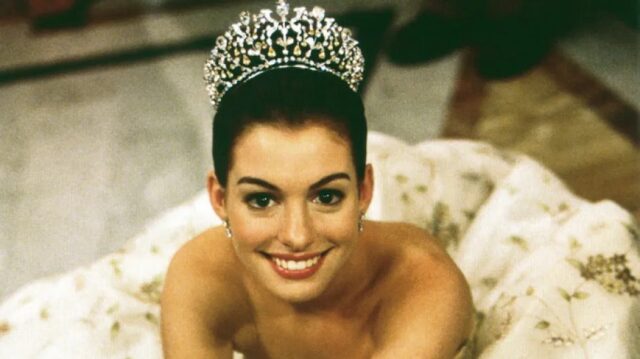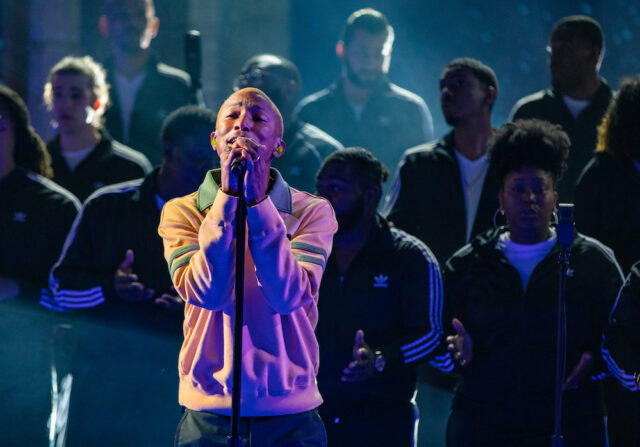ASK AN EXPERT: JOAN BAKER
 Joan Baker is one of New York’s leading voice-over actors. Her credits include narrating a documentary about the founding of the William Jefferson Clinton Library, now a part of the library’s permanent display; ABC Daytime, HLN, TBS, ESPN, Showtime, Chase Bank, Grand Theft Auto, and American Express. Her amazing talent has been coupled with her passion for giving – she’s been spotlighted in feature articles in The New York Times, Black Enterprise, New York Post, New York Daily News, and Hollywood Reporter to name a few. She also recently hosted the red carpet for A&E’s coverage of the Tribeca Film Festival. Read Glitter’s ASKANEXPERT with Joan Baker to find out how you can break into the voice-over industry.
Joan Baker is one of New York’s leading voice-over actors. Her credits include narrating a documentary about the founding of the William Jefferson Clinton Library, now a part of the library’s permanent display; ABC Daytime, HLN, TBS, ESPN, Showtime, Chase Bank, Grand Theft Auto, and American Express. Her amazing talent has been coupled with her passion for giving – she’s been spotlighted in feature articles in The New York Times, Black Enterprise, New York Post, New York Daily News, and Hollywood Reporter to name a few. She also recently hosted the red carpet for A&E’s coverage of the Tribeca Film Festival. Read Glitter’s ASKANEXPERT with Joan Baker to find out how you can break into the voice-over industry.
GLITTER: Where did you get your training and education?
JOAN: Aside from taking dance and acting all my life and performing as a child actor for a local TV show in San Francisco where I grew up, I went to an Arts high school where dance, music, and acting were the primary focus. From high school, I was trained as a dancer at Alvin Ailey through a scholarship program they offered. It was an incredibly competitive program with hard core training from morning to late evening and on some weekends. When I wasn’t training in the studio I was absorbed in plays on Broadway, learning from watching the best dance talent (and actors) in the world. I was also able to land a lot of on-the-job dance training by working in music videos, which were exploding in the 80s, and doing live acts for emerging artist. Kool Moe Dee, LL Cool J, Keith Sweat, Freddie Jackson, and Meli’sa Morgan are some of the music videos and stage acts for which I performed as a dancer. Plus I did my own Josephine Baker impersonation at Chez Jospehine, a wonderful French Bistro in midtown Manhattan, owned by one of Josephine’s son, Jean Claude Baker. That was live, up close and personal in the style that Josephine made famous, dancing on tables, working the room, eating from the clients plates – all that fun stuff. But a dancer’s training never stops. Dance trends change pretty regularly and there’s always some innovative choreographer with a new style or technique that you want to learn to keep up and stay sharp.
GLITTER: How did you get your start in the voice-over business?
JOAN: Along with dancing in shows and videos, I was also pursing acting. As a mixed raced person, one of the problems I kept coming up against, whether dance or acting, was the question of my not fitting into a clear racial category. I can’t tell you how many times I made it to a final call-back only to be told that I didn’t fit the racial profile. So when I saw an ad from a wonderful woman who taught voice acting technique, it hit me like a ton of bricks that I wouldn’t have to worry about race since you don’t see the voice-over talent. I was determined to have a career in showbiz one way or another, so voice-overs was it while I waited for an open-minded producer/director to give me a shot on stage or in film. What was your big break? I always had a knack for doing cartoon voices, plus my timing as a dancer really came in a handy because voice-over often depends heavily on timing. What I hadn’t realized until the voice-over training began, was how much my regular speaking voice, not my zany characters, and would be depended upon for most voice-over job available in New York. But you had to have a top talent agent to have any chance at those jobs. So my first big break was landing a top voice-over agent who had access to ad agencies, TV networks, radio stations and the top, union jobs. Had I not been totally naive, I would never have landed the job. Why? Because I just walked in to the offices of Don Buchwald and Associates and said, “Hi! Have a listen to this incredible demo reel I put together!” They must have thought my mix of naiveté and moxie was cute because they listened to my demo and signed me on the spot. Of course, winning jobs with Olay, the Olympic Games, Showtime, HBO, and many other clients combined into a dream career I had never expected or even imagined the big break was a gig for ABC News, who had not hired a female voice actor in nearly 10 years. I call that “the big break” because first, I did the networking and created the opportunity through on my own steam. You definitely need an agent, but getting your own work is an important aspect of voice acting. Second, I met a dreamy and exceedingly talented director/producer on this gig, who went on to become my husband of 15 years.
GLITTER: What skills are necessary to be a successful voice-over artist?
JOAN: Voice-over is not a very exact skill until it is. By that I mean you have to get into the mix of the various kinds of training before you really begin to see what there is to learn and what pertains to you in particular. On the surface, I’d say the key things to learn are the different script genres, often referred to as “real person, announcer, spokesperson, characters, banter, PSA etc. There aren’t so very many genres but they all require different interpretive skills and talents. There’s also comedy and drama to be considered, and some folks just have knack for one or the other. In addition to knowing the genres, training includes timing, relaxation, projecting a naturalistic tone, learning microphone technique, releasing inhibitions and learning to create the world of a script within a lonely, lifeless recording booth with no stimulation other than the script, a director and your imagination. Unlike acting for film, TV or stage, you don’t typically have other actors, props or an actual environment to interact with. You do it all with your imagination!
GLITTER: For teens that want to know, what types of jobs are available in voice-over?
JOAN: Teen voices, for one. All the voices are needed at some point. Just look around at all the teens in commercials on TV. These same commercials of radio counterparts and ads connect better when delivered on a peer to peer basis. In other words, teens like to get information from other teens. Of course there are cases where a teen would want to hear from an adult too, but suffice it to say that there are plenty of voice-over jobs for teen voices. It’s also worth mentioning, that voice-over is a long term career so by starting as a teen, you’ll be building experience and expertise that can help you get bigger and better jobs along the way. It’s just like acting. You start young and grow into different parts over your life and career.
GLITTER: Have you ever done or wanted to work on an animated movie or series?
JOAN: I’ve worked on numerous animated series for the overseas market, Japanese animation translated to English. I’m also the news reporter’s radio voice in Grand Theft Auto and other video games as well. I would love to land a big feature Animation film part but most of that work goes to celebrities due to the need to attract parents. You see, a 7-year-old kid doesn’t care or know who’s behind the donkey in Shrek. He believes it’s the donkey’s voice. The parents, on the other, who would rather be watching a film for mature audiences, is at least excited to know that he’ll be hearing the voices of some of his favorite actors.
GLITTER: What have been some of your favorite voice-over gigs?
JOAN: Voicing a documentary alongside former president Bill Clinton that is on permanent display in the Clinton Library, being the voice of the Muhammad Ali at the Ali Center along with recording 6 commercials that ran during the Olympic Games. Those are just a couple.
GLITTER: Is there anyone that was a favorite to work with?
JOAN: I never worked with him as a voice actor, but the late Don LaFontaine was a lightning rod for inspired voice work and we worked on numerous live career events for voice acting. He also penned a chapter in my book, Secrets of Voice-Over Success, so that became another opportunity for us to work together and I can’t put into words how much I learned under his mentorship. Voice actors do very little work together. It happens on occasion, but mostly each voice actor works in the booth alone, with only a director in her ear and the clients listening in. Secrets of Voice-over Success changed the industry in the sense that it brought together some of the nation’s top voice-over talent to meet and interact with each other for the first times in their careers. Many of them were thrilled to meet each other for the first time, having listened to each other’s work over many years. It was a very special thing to see.
GLITTER: Who would you love to work with in the future?
JOAN: I’d love to work with Seth MacFarlane, Tim Burton on the animation side and I’d love to do a documentary with narration for Ken Burns. Commercially, there are a host of phenomenal creative directors that I’d like to work with, like Tor Myhren of Gray Advertising and my husband, Rudy Gaskins of our own Push Creative Advertising.
GLITTER: Tell us about your book, Secrets of the Voice-over Success, and what readers can gain from it.
JOAN: What readers gain from Secrets of Voice-Over Success is real insight into what it takes to create a voice-over career as told by people who have done it successfully. It’s really a practical step by step guide mixed with the personal emotional side, which changes dramatically for each person interviewed for the book. There are 21 separate stories in the book, so unlike voice-over books written by one person from a solitary point of view, my book gives you multiple points of view so that you can piece together a path that fits your life.
GLITTER: Your philanthropic work has been featured in such magazines as Essence, The New York Times, and New York Daily News, tell us more about it and why it’s important to you.
JOAN: The book, Secrets of Voice-over Success, was actually born out of a desire to honor the life of my father, who died from complications of Alzheimer’s disease. It seemed very arbitrary at first, to simply jump into a social cause because I lost someone dear to my soul. But the more I looked into what I could do, and through talking it through with my husband, Rudy, we came upon the idea of doing something that would involve the voice-over community in which we both worked. There were several voice-over books written from a single, limited point of view, so why not involve many points of view through close friends and voice-over superstars, and give people a book that would reveal the larger scope of the vast voice-over industry. And let’s give 100% of the royalties to the Alzheimer’s Association. Now, I’ve wanted to be a philanthropist since I was a child. It was something powerful and inspiring that I saw with many of my favorite actors who I also wanted to emulate. So philanthropy was something I always saw as a natural extension of a successful life. Of course, I had no idea how it would show up in my life until it did. The death of my father created an opening. My closest community jumped in to help me fill that opening and it’s continued since the first printing of the book in 2005. We now into the 3 printing of the second edition, and I continue to work close with the Alzheimer’s Association, raising money and awareness through national voice-over career events we do throughout the country.
GLITTER: What advice do you have for teens wanting a career in the voice-over business? What are some tips to get started?
JOAN: There are so many ways. Singing, acting, public speaking, joining the debate team – any of these practices lend themselves to stretching our understanding of using your voice. There’s spoken word art, reading aloud, reading stories to children or to the blind. Nothing here is unusual or new, but if you take the point of view that you are beginning a process of exploring and building a relationship with words and the interpretation of ideas, you will be on a path of doing voice acting. My husband always points out to our students, “Words are magical seeds that take root whenever they are spoken. Honor them. “I would say to a teen to learn to honor the words and revere the opportunity to make them count for something good and powerful and inspirational.
GLITTER: The voice-over business seems like a very behind the scenes career, but you also work in front of the camera.
JOAN: I continue to pursue on-camera work for film and TV and for the theatre and I’m happy to say that there’s growing success for me in those areas. Fortunately, the problem of being mixed race is no longer the same tired issue that it was in the 80’s. There is a great deal more openness, if not an outright need, for advertisers and filmmakers to be inclusive if they hope to convey any sort of authentic picture of the world. Being in front of the camera is where my heart is. I love it and it brings me to life with an electricity I don’t feel anywhere else. It’s an artistic connection that calls upon every fiber of your being and everything is on the line in terms of risk. I love it. Tell us about your recent red carpet gigs and on camera work. What do you enjoy about on screen work and do you prefer one over the other? Recently I was selected as the red carpet host for A&E to cover the Tribeca Film Festival. It was a huge opportunity, a massive amount of work and a tremendous honor. And that’s even before thinking about the fun of interviewing some major celebrities and emerging stars. The independent roots of the Tribeca Film Festival lend itself to a much more thoughtful consideration of film-making as an art form as opposed to a business with press junkets and such. Everyone, including the stars is more on a labor of love vibe and the conversations are more from the heart. That’s very different from asking questions like, “Who are you wearing?” though I wouldn’t hang up on the Oscars if they come calling.
GLITTER: What are some of the fun aspects of the voice-over business that teens may find appealing?
JOAN: Self-expression, without a doubt. In voice-over, the people who have the most impact are usually those whose unique character or personality is easily revealed. No one can be you like you can so the more “you” you bring to the table the more unique the performance and the happier the people who hire you. The money isn’t bad either. Well, sometimes it is, but you could make 75 thousand dollars off a single national commercial that may take you 30 minutes to record. You meet a lot of creative people who are doing all kinds of things in acting, music, directing, writing, etc., so voice-over can definitely open doors to other opportunities. It’s not static.
GLITTER: Any funny moments to share from working on set?
JOAN: I went up to Robert DeNiro on the red carpet at Tribeca Film Festival interviewed him and shook his hand when NO OTHER reporter DARED to approach him. After that every reporter on the red carpet introduced themselves to me (about 75) and wanted to know who I got the nerve. Smile.




